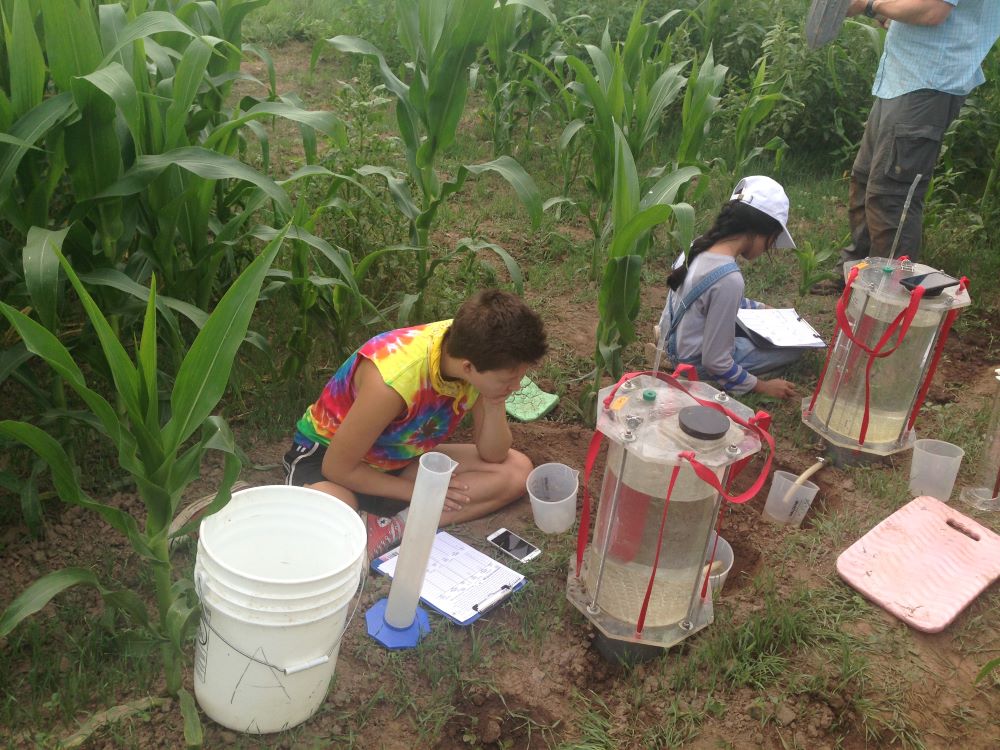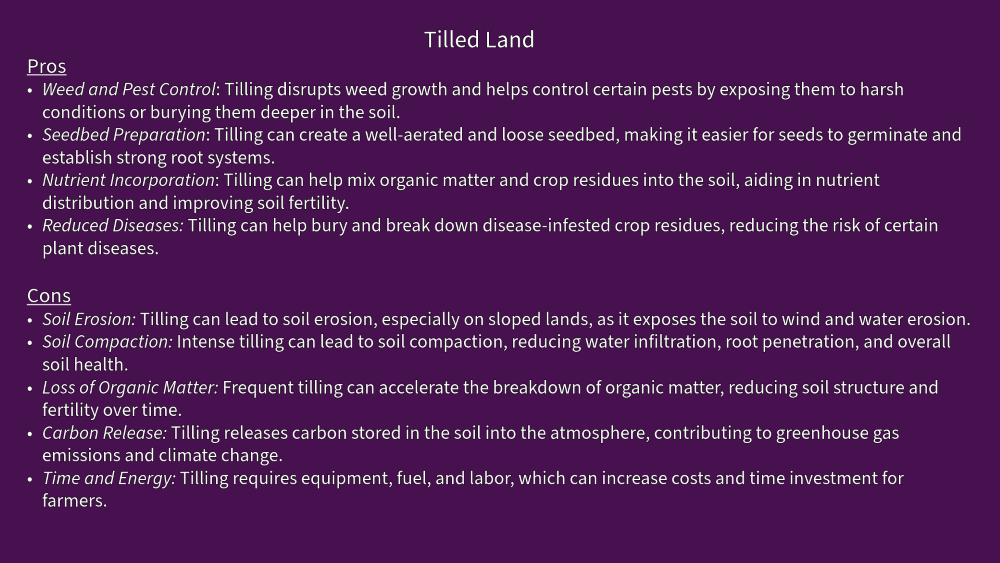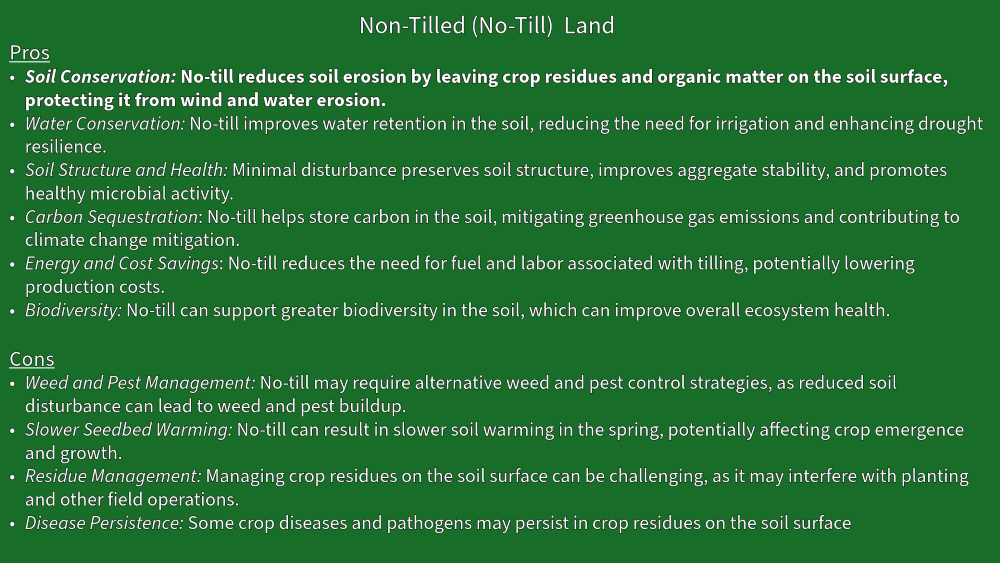Preamble
In the pursuit of sustainable agricultural practices, the comparison between tilled and non-tilled lands has gained importance due to its impact on soil erosion and water quality. This study aims to quantitatively assess the differences in erosion rates and water quality between tilled and non-tilled agricultural plots. The research was conducted in collaboration with the Applied Farmscape Ecology Research Collaborative (AFERC), involving multiple partners, to comprehensively evaluate the interaction between soil, water, and vegetation in the context of various farming techniques.
Methodology
A field study was conducted using a rain simulator, specifically a soil infiltrometer developed by Cornell University’s soil laboratory. This apparatus mimicked rainfall and allowed for the measurement of soil infiltration and runoff. Four infiltrometers were deployed across different agricultural plots within the Hudson Valley Farm Hub, each with distinct soil characteristics. The infiltrometer’s structure involved a cylindrical plastic body with controlled water release through small holes at the bottom. The system was placed atop a metal base inserted halfway into the soil, with runoff collected and analyzed for turbidity (Figure 1).

Results
The study encompassed various agricultural sites, including green beans, broccoli, and corn, utilizing both tilled and non-tilled plots. Notably, the highest infiltration capacity was observed in the broccoli plots, which possessed a higher percentage of silt and lower sand content. Turbidity emerged as a significant factor, indicating water quality and erosion. Tilled plots exhibited approximately 17.5 times higher turbidity compared to non-tilled plots, highlighting the substantial impact of tilling on erosion and sedimentation.
Conclusions
The research underscores the environmental benefits of non-tilled practices, evident through lower turbidity levels and reduced erosional effects. While the degree of erosion between tilled and non-tilled plots is well recognized, this study provides a quantitative perspective, emphasizing the significance of the 17.5 times difference in turbidity. Non-tilled plots prove to be environmentally friendly, although further investigations are essential to precisely quantify erosion rates. Equilibrium infiltration capacity emerged as a crucial parameter, higher in tilled plots due to their porous nature. These data can guide optimal irrigation practices, particularly in water-scarce regions, fostering sustainable water management in agriculture.
Implications and Future Research
The findings from this study contribute to a better understanding of the erosional impact of different farming methods on water quality. As erosion and sedimentation adversely affect both aquatic ecosystems and human water supplies, the importance of adopting non-tilled practices becomes evident. Future research could focus on broader geographical areas and crop varieties to enhance the generalizability of results. Additionally, investigating long-term effects and the economic viability of non-tilled approaches could provide a holistic perspective on sustainable agriculture.
Pros and Cons of Tilled vs Non-Tilled Land for Agriculture
Tillage refers to the practice of plowing and preparing the soil for planting crops, while no-till (non-tilled) agriculture involves minimal soil disturbance and leaving the soil mostly undisturbed. Both approaches have their own set of advantages and disadvantages. Below is an overview of the pros and cons of tilled vs. non-tilled land in agriculture.


Ultimately, the choice between tilled and non-tilled agriculture depends on various factors, including the specific cropping system, soil type, climate, equipment availability, and management goals. Many farmers have adopted conservation tillage practices that fall between traditional tillage and no-till to balance the advantages and disadvantages of both approaches.
